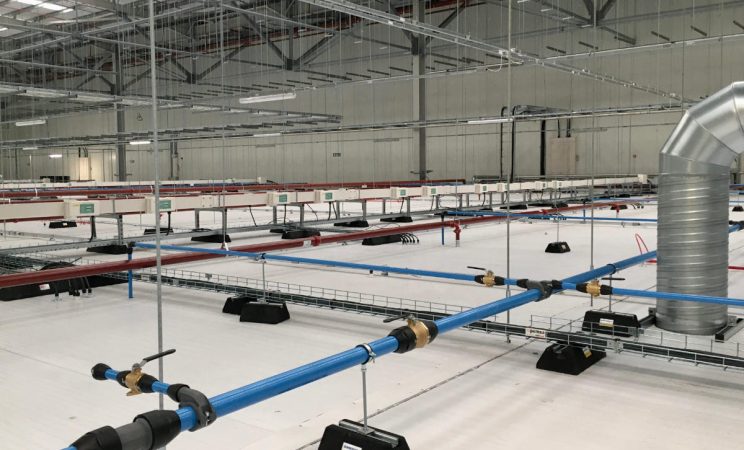A well designed compressed air system and pipework design saves energy and is overall more efficient.
Most compressed air systems we come across haven’t been designed to be the way they are. Most systems are designed and installed when the factory is new. Over the years things change. New equipment is added in some places. New sections of pipework are added in. The air is used for different things making the demand very different to that originally intended. Additional (larger or smaller) compressors are added, buildings are modified and assembly lines are moved. The eventual situation is that what was originally designed as an efficient, well designed system becomes less and less effective.
Common issues with pipework systems
I frequently come across systems that are very poorly suited to their current usage. Receivers are too small for the compressor they are linked to. Large compressors are linked to systems through small diameter pipes. Small diameter pipe leads to larger diameter pipe in more recent parts of the building. Pipework doesn’t form a ring – it is effectively in the form of a long spurs. Pipework has many 90’ bends and changes of diameter. All of these and may other issues effect the overall efficiency of the compressed air system.
Below are minimum recommended pipe sizes for listed compressor sizes for a ring main. Pipe sizes will need to increase further with length of pipework run, larger pipe sizes should be used to link from compressor to the ring main.
- – ¾” pipe up to 11KW
- – 1” pipe up to 22KW
- – 1 ½” pipe up to 45KW compressors
- – 2” pipe up to 75KW compressors
- – 2 ½” pipe up to 120KW compressors
Better pipework = lower system pressure
A more efficient pipework system means a smaller compressor can be used to supply the compressed air you need. The compressor works less hard meaning that it uses less energy. The pressure losses in the system are lower, meaning you can get the pressure where you need it more easily. This means you can lower the overall system pressure. Which saves you even more energy.
Receiver Sizing
One aspect of system design that is often overlooked is receiver sizing (find out more here). This particularly applies when larger compressors are fitted to existing systems. The compressor is uprated but the receiver isn’t changed. The receiver is a critical part of any compressed air system. It has many functions in addition to the simple ‘compressed air storage’ function.
Broadly the larger the receiver the better and more efficient the compressed air system becomes (particularly with fixed speed machines). Generally, if in doubt go for the bigger air receiver.
Receiver sizing has a considerable effect on compressor efficiency, particularly for fixed speed compressors, since a suitably sized receiver will often reduce the amount of time the compressor is running ‘unloaded’, saving energy.
FAQ – why do compressors run unloaded?


